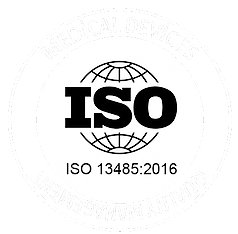
These are exciting times for medical device innovation. At any given time, there are hundreds of medical device development projects underway, with thousands of people putting their creativity and skills to work and billions of dollars invested. They are in all areas of medical device development. Some are large, some are small. Some will be successful, and many will not.
There is one thing common to almost all of these development efforts, with some notable exceptions. For the vast majority of these projects, the eventual cost of product development is unknown. While cost estimates exist, the track record shows that these forecasted development costs are far from being reliable.
There are good reasons that fixed-cost or milestone-based pricing is a rarity in this field.
Medical device development—and especially for Class II and Class III devices—is a highly complex undertaking that can last years, not months. Going into it, there are many unknowns, and initial assumptions may prove inaccurate as the project unfolds.
So how does Nocturnal make fixed-cost projects work?
We sat down with Cinnamon Larson, PhD, VP of Research and Development at Nocturnal, for a look behind the scenes at the formula that makes Nocturnal successful with its milestone-based pricing strategy.
Over her twenty five years of experience, Larson has led numerous pivotal projects, notably in the development of life-saving and implantable medical devices. "I've always been kind of an artist but also very much interested in science and math. Growing up not too far from Cape Canaveral, I aspired to be an astronaut and was drawn to aerospace engineering, which allowed me to combine my passions for art and science.”
The foundation in aerospace equipped Larson with a rigorous analytical mindset and meticulous attention to detail, virtues that proved indispensable as she transitioned to medical device development: “I am drawn to the intricacies of design, where every curve and material choice could potentially save a life,” says Larson.
Transparent communication: the bedrock of trust
Working with clients, Larson views open communication as the lynchpin for successful fixed-cost projects. "Transparency is not just about keeping the clients in the loop. It’s about creating a shared vision that drives the project forward from start to finish."
Ensuring that all stakeholders have a unified understanding of the project's scope, timeline, and deliverables is critical. It provides a solid foundation that minimizes the risk of misaligned expectations, scope creep, or budget overruns.
“Working in a highly technical field, things can get confused. Terminology can mean one thing to one person and a different thing to another. We have to get really good at listening, asking questions, and hearing the client. And then it’s really important to play back to them what we understand from them and how we interpret it,” says Larson.
Detailed scoping: the blueprint of success
That understanding of the client vision and goals then has to be translated into a project plan, and that can be a challenge when working with startups and innovators, as Larson has experienced firsthand.
“Entrepreneurs tend to be dreamers, which is how they come up with great ideas. It’s up to us the engineers to put the details into the plan and do the reality check that it can be achieved given all the constraints we have—not just budget but also time, availability of material, regulatory requirements, and everything else that has to line up for that product to be successful.”
It’s during this phase that the project's objectives, deliverables, and boundaries are meticulously defined. The more detailed the scoping, the smoother the project will run.
“Clients are often in a rush to get started with the design work, and understandably so. It’s our role and responsibility to make sure we get the scoping done right first. We have to understand what requirements the design needs to meet, and we need to make sure these requirements are testable when it comes to verification and validation. We have seen it paying off time and again when it’s done right at the outset,” says Larson.
The best-laid plans of mice and men
As rigorous as the planning can be, the best-laid plans can still go awry. Embracing an Agile approach allows Nocturnal to maintain a high degree of adaptability while staying within the project timeline and budget.
The iterative nature of Agile facilitates regular feedback loops with clients, ensuring that the project remains aligned with the envisioned goals. "Agile allows us to be on the same page with the client at every stage of the project, making course corrections as a collaborative effort rather than a reactive adjustment," explains Larson.
For Larson, this is when the strength of the team and the processes they’ve built at Nocturnal shine through.
“When we face challenges in the design process, I view it as an opportunity. Each setback teaches us something valuable. As a team, we’ve learned to embrace the cycle of problem-solving, failing, and then succeeding—it's part of the process. We trust the system we’ve put in place to overcome challenges, and we use these experiences to improve the product we’re working on.”
Staying on track: a win-win proposition
As Larson points out, it’s these challenging moments when managing a fixed-cost project gets tested. “If we were working on time and material, we could just say we need more time and we need more money and that would mean that the timeline for the device gets pushed out and the budget gets thrown out the window,” says Larson. “That’s not something that most startups can afford. So we have to be better at working through these challenges and course correcting while staying within the time and cost constraints and communicating these course corrections to the client.”
Keeping the project aligned with the goals is an ongoing challenge even in the best times. Larson and the team often find themselves reminding clients that in most cases, “less is more” when it comes to getting a medical device to the market. “Adding more features is not necessarily the right thing to do, especially when you are working on an implantable device that requires minimal form factor and power consumption,” says Larson.
At Nocturnal, this collaborative approach has not only led to a track record of successful fixed-cost projects but has also nurtured enduring relationships with clients. "The success of a fixed-cost project is a testament to the synergy between us and our clients,” says Larson. “It’s about sharing the risk and moving beyond transactions to build relationships that thrive on mutual growth and success."
Is milestone-based pricing right for you? If you are interested in learning more about Nocturnal's unique approach, drop us a note and tell us about your project needs.
MOST READ POSTS
Insights from a decade of milestone-based projects
Transforming biosignals into clinical insights
Why investors say No to medical device startups


